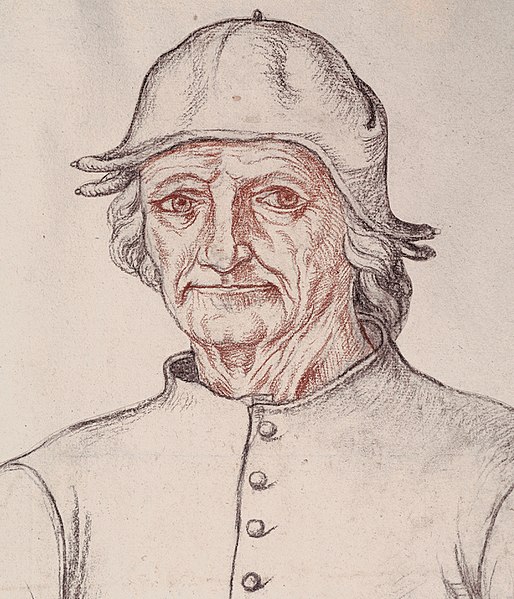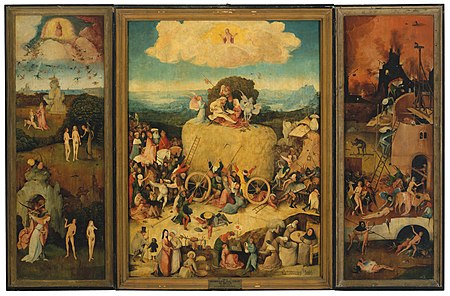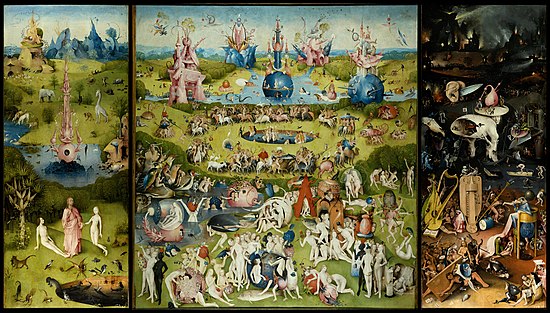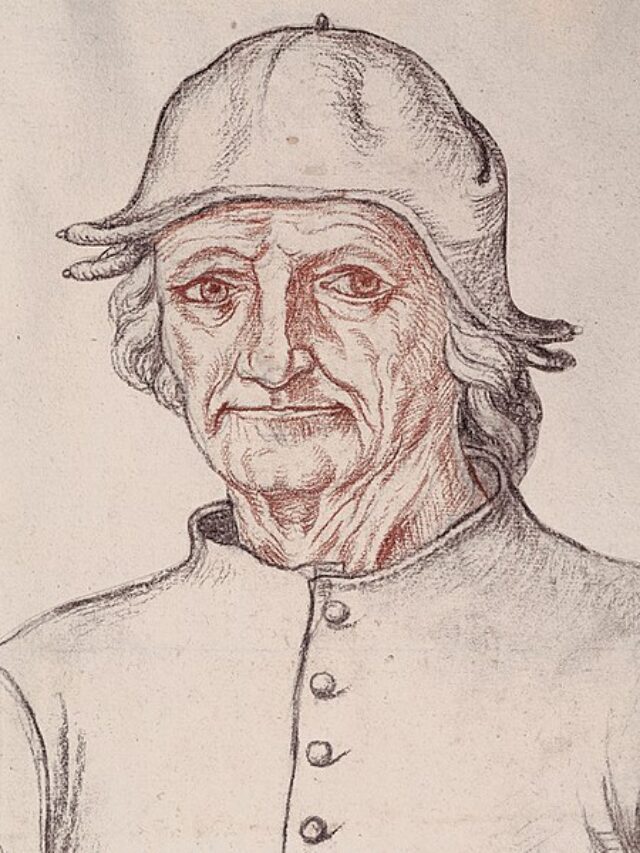Dreamy paintings with ominous imagery are linked to the name Hieronymus Bosch, an artist from Dutch/Netherlands. According to some historians, Bosch was a conservative who expertly blended beautiful ornamental elements with the macabre, symbolizing his strong Christian values, despite his reputation as an iconoclast. Hieronymus Bosch likely existed in two distinct worlds: the actual one he was surrounded by and the one he imagined. The Christian God had created and was in charge of the real world.
For Bosch and his contemporaries, God decided everything that happened in it, and angels, saints, and demons watched over it, no matter how horrible, terrible, or threatening it could be. Bosch was a craftsman by trade and became a brilliant artist. He moved up the social scale and became a member of the city’s and region’s elite because of his skill as a painter and draughtsman. He saw reality and built his universe next to it, full of monsters, chimaeras, and nonexistent species such as tree-people and human trees.
Bosch was one of the first painters to use triptychs to represent abstract concepts. While his stories deal with social, political, and environmental issues, some of his most well-known works, like “The Garden of Earthly Delights,” heavily symbolise religion. His intense brushwork and meticulous attention to detail, which distinguished him from other Netherlandish painters and left an archive that defies critics and historians to piece together his intricate narratives, were influenced by his early work as a draughtsman.
How Bosch handles the triptych structure of his simultaneous development of radically new and older traditions is very impressive. The unique imagery in the paintings of Hieronymus Bosch delves into themes of sin, human fallibility, and the end of the world. His vivid colours, which stand for sin, Hell, demons, and either a true or false Paradise, are one of his most remarkable features. The fact that Bosch employed fantastical imagery makes it difficult to interpret his symbols, which has led some historians to hypothesise that they are authentic translations of mediaeval sermons and biblical descriptions. The artist explores the various aspects of the devil by creating imaginative devils such as a flying creature. Bosch’s work never fails to enthral and resist explanation thanks to its remarkable colour contrasts and enigmatic meaning.

We assess that Hieronymus died in 1516–1517, perhaps a bit younger than sixty-five, from an infectious sickness that was killing a lot of people during the period. Following in the footsteps of his two brothers and, a generation later, his two nephews, one of whom was also a sculptor, Hieronymus followed the family tradition and turned to painting. It is reasonable to believe that Hieronymus received his training from his father and uncles in the family studio and that his career on the Markt began there, even though no surviving works of art can be definitively traced to any of his relatives.
Typical of the tradition, Bosch was commissioned to create much more than only panel paintings. He painted a wide range of objects, created designs for a wide range of products, including stained-glass windows, brasswork, and embroidery, and even provided consultation on the work of other artists and craftspeople, much like other late-medieval painters did. The Brotherhood of Our Lady’s archives have mostly survived. When paired with additional’s-Hertogenbosch archive material and Bosch’s extant body of work, they enable us to piece together the wide variety of professional endeavours that Bosch undertook.
Hieronymus Bosch’s well-known triptych, “The Garden of Earthly Delights,” which honours marriage, contains biblical meaning. The left panel depicts Adam and Eve’s blissful union in Eden, while the central panel unveils a hedonistic paradise. The chaos foreshadows judgment, and the nudity implies that banishment is about to happen. Art historians have been intrigued with Bosch’s masterwork for over five centuries because of its versatility and ability to merge absurdity, humour, and reflection. It is “a reflection of Bosch’s comedy, absurdity, and unlimited imagination, affording art enthusiasts endless fascination,” as Claire Selvin so beautifully puts it.
Visual examination of Hieronymus Bosch’s paintings and drawings is a significant part of the oeuvre’s construction. For the past century, stylistic analysis has been the primary method employed by art historians to identify what constitutes an authentic Bosch work. Until other forms of argumentation are available to address attribution issues, visual analysis will continue to be the predominant method. Sheet music has been observed by art historians on the naked but tortured figure’s butt in Bosch’s Garden of Earthly Delight depiction of Hell, indicating a connection between excess and music. The brand on the notes is that of an unknown business. Readers can even hear contemporary renditions of the sheet music on the internet.

The potent way Bosch’s painted oeuvre entices his viewers to ponder the painted picture is a defining characteristic. The painter takes considerable measures to captivate his audience and encourage them to linger over the painting and consider its meaning. His goal is to establish a connection between the audience and the topic. Bosch employs imagery on the one hand and technique on the other to make it personal.
Hieronymus Bosch’s painting “The Temptation of St Anthony” departs from his usual apocalyptic themes by presenting the saint as a person who can resist temptation. There are menacing hybrid creatures all about St. Anthony, even though the brushwork is finer. There were doubts about its authenticity until the scientific analyses of the Museo del Prado established its authenticity. Anthony is depicted in this serene picture praying inside a tree stump while surrounded by markings on his cloak and his patron animal, a pig. Despite Boschian traits, the backdrop from sacred scriptures gives a tranquil mood, highlighting Anthony’s inner serenity and the unwavering victory of justice over sin.
The paintings’ impression of spontaneity and directness is derived from the impastoed features over sketched underdrawings and the comparatively quick and thin application of paint layers. The spectator is dragged into the creative process because the artist’s hand is visible. The latter is crucial because Bosch is repeatedly depicted trying to find his original shape, even after he has sketched out his initial layout and painted his first few brushstrokes.

Bosch’s most important work, The Last Judgment, embodies the emphasis the mediaeval church put on sin and damnation. Bosch’s perspective is unique in that it shows a scenario after the end of the world, whereas Michelangelo’s contemporary interpretation does not; instead, his use of impasto brushwork subverts Flemish traditions by illuminating a storey of horrifying metamorphosis. Purgatory is left out of the triptych in favour of Heaven and Hell. Bosch’s impact is evident in his clarity and universal resonance, even though some of his images may be upsetting. They raise issues related to religious influence, societal anxiety, and populist entertainment.
At first glance, Hieronymus Bosch’s artwork appears to be simpler to duplicate and mimic than that of his forebears and contemporaries, such as Jan van Eyck, Rogier van der Weyden, or Gerard David. This is precisely what happened extensively during the sixteenth century. A work by Bosch is often distinguished from one by an imitator or, more broadly, a follower by the care and attention to detail that went into its conception.







